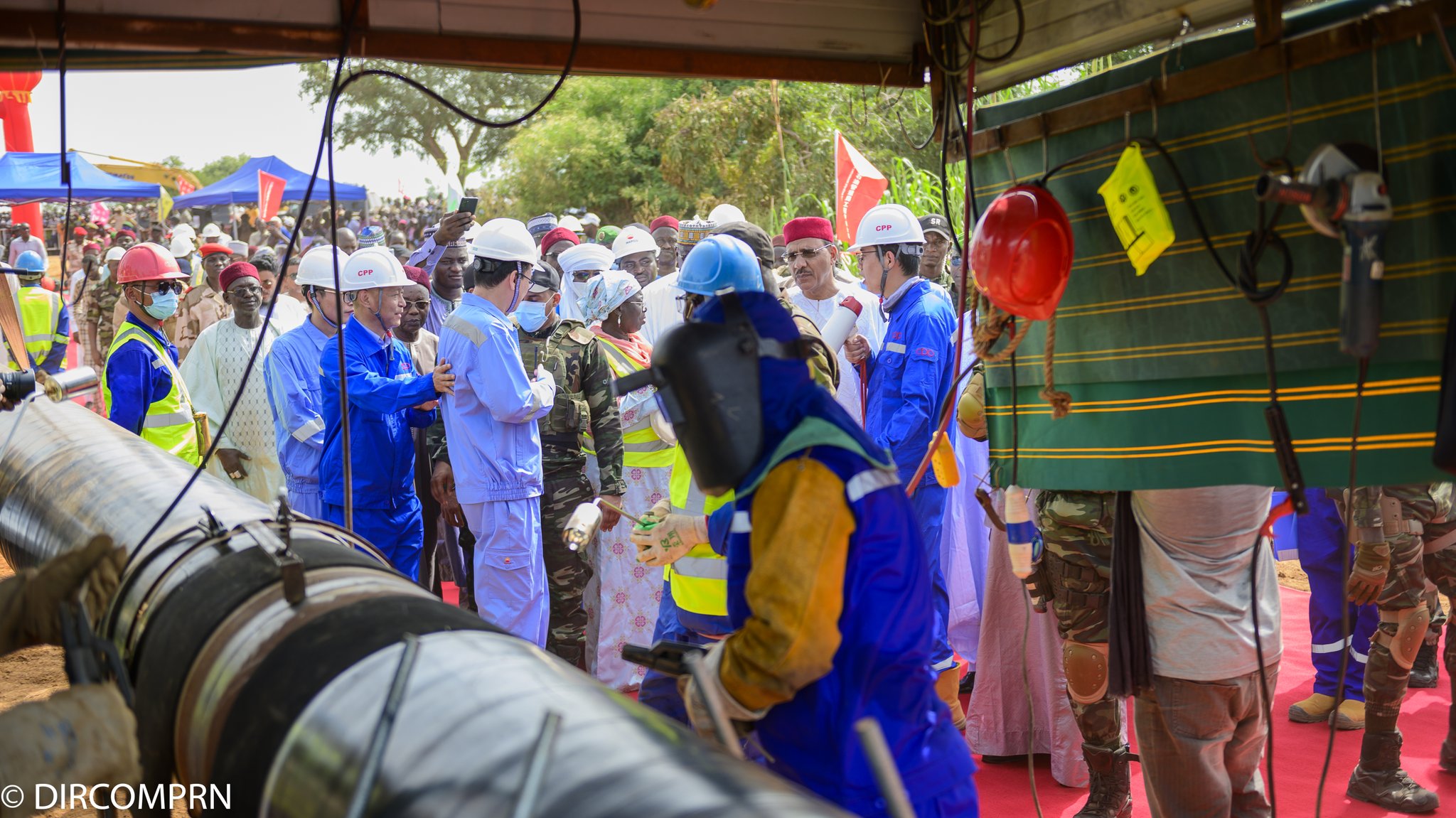The Presidency of Niger has revealed last week that the Niger-Benin Oil Export Pipeline is 30% complete, during an official inspection on October 10th by President Mohamed Bazoum. “Over 600km have already been laid across several sections,” the Presidency said.
The $4bn pipeline will be 2,000km long and link Niger’s oilfields in the Agadem Basin to an export terminal at Sèmè-Kpodji in Benin. It is being built by the West African Oil Pipeline Company (WAPCO), a subsidiary of the China National Petroleum Corporation (CNPC).
Upon completion, it will export up to 90,000 barrels of oil per day (bopd) from Niger. Its commissioning is expected at the end of 2023.
CNPC currently produces only about 15,000 bopd from Niger to supply its 20,000 bpd SORAZ Refinery. Once the pipeline is operational, the Chinese operator intends to ramp up its production to 110,000 bopd, most of which would be exported. Spare capacity will still be available for third-party operators like Savannah Energy, operator of the R1234 PSC area onshore Niger.
Details on the Niger-Benin Oil Export Pipeline and blocks activity onshore Niger are available in the “Projects” section within the Hawilti+ research terminal.

